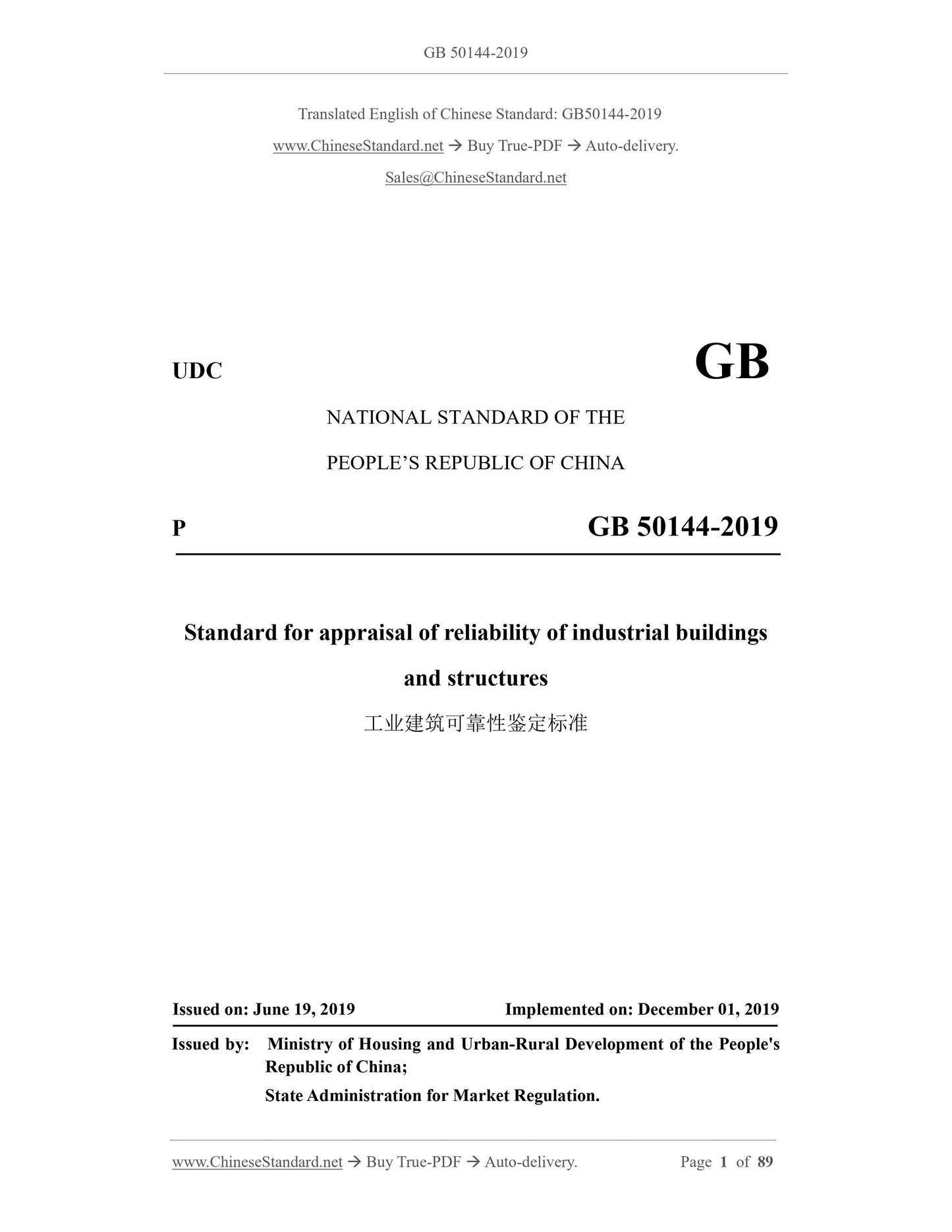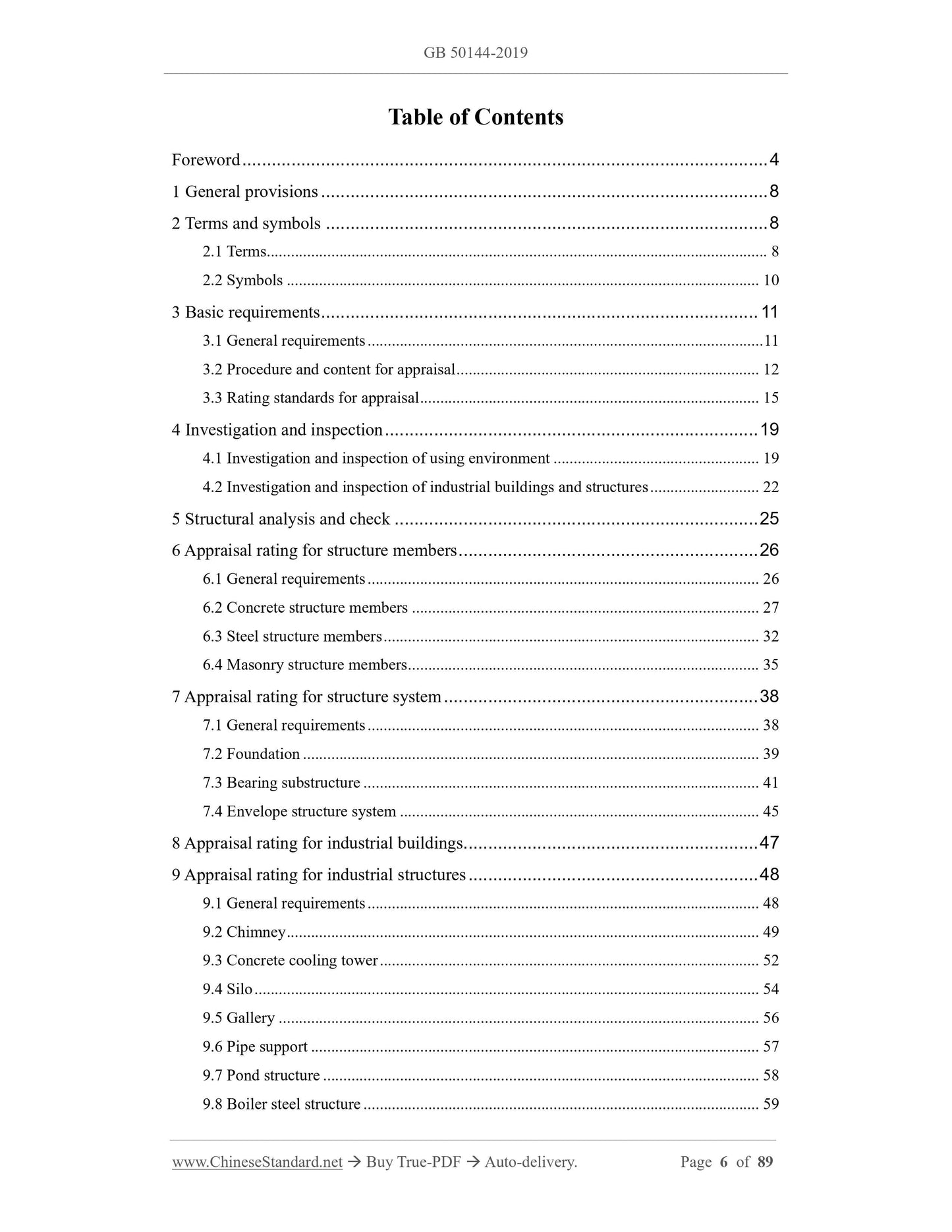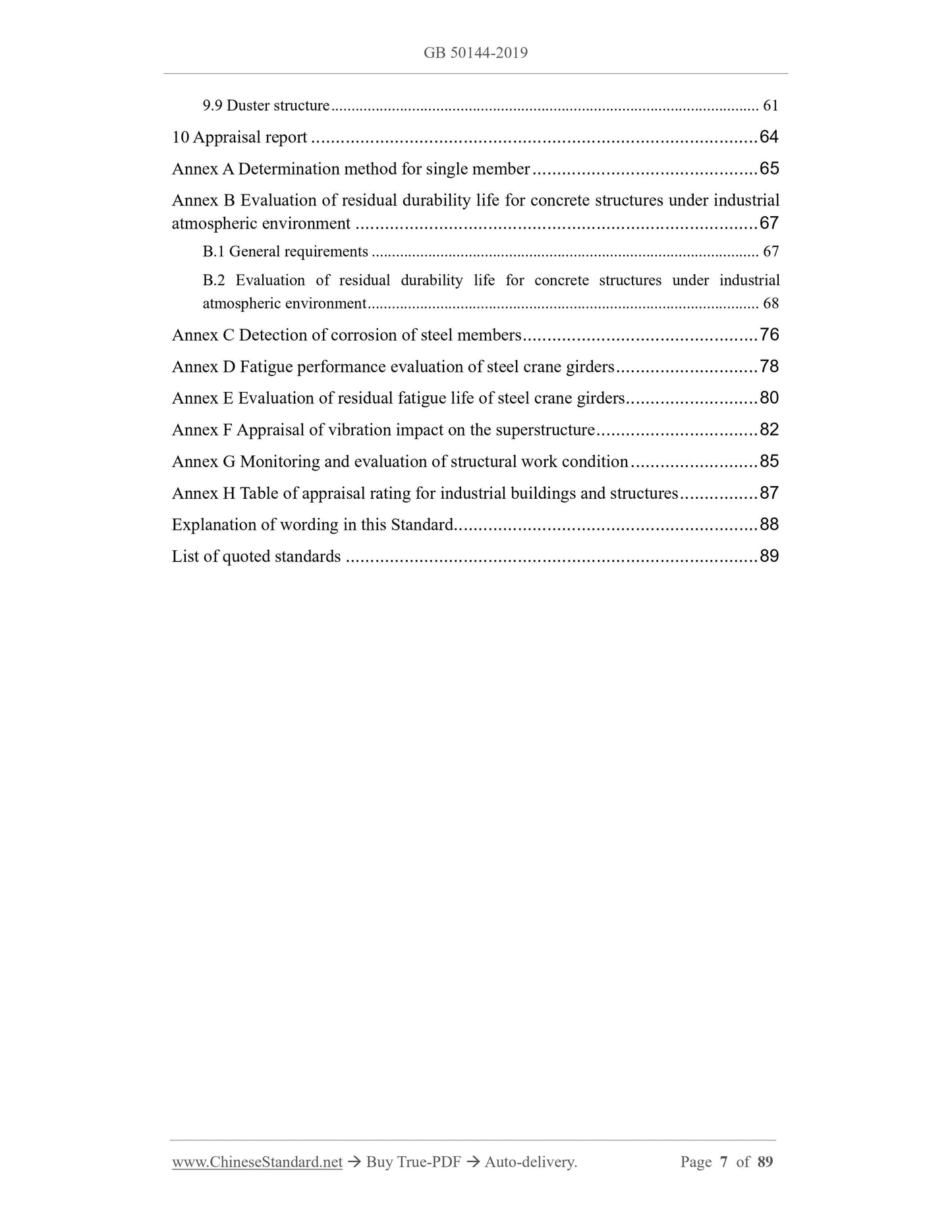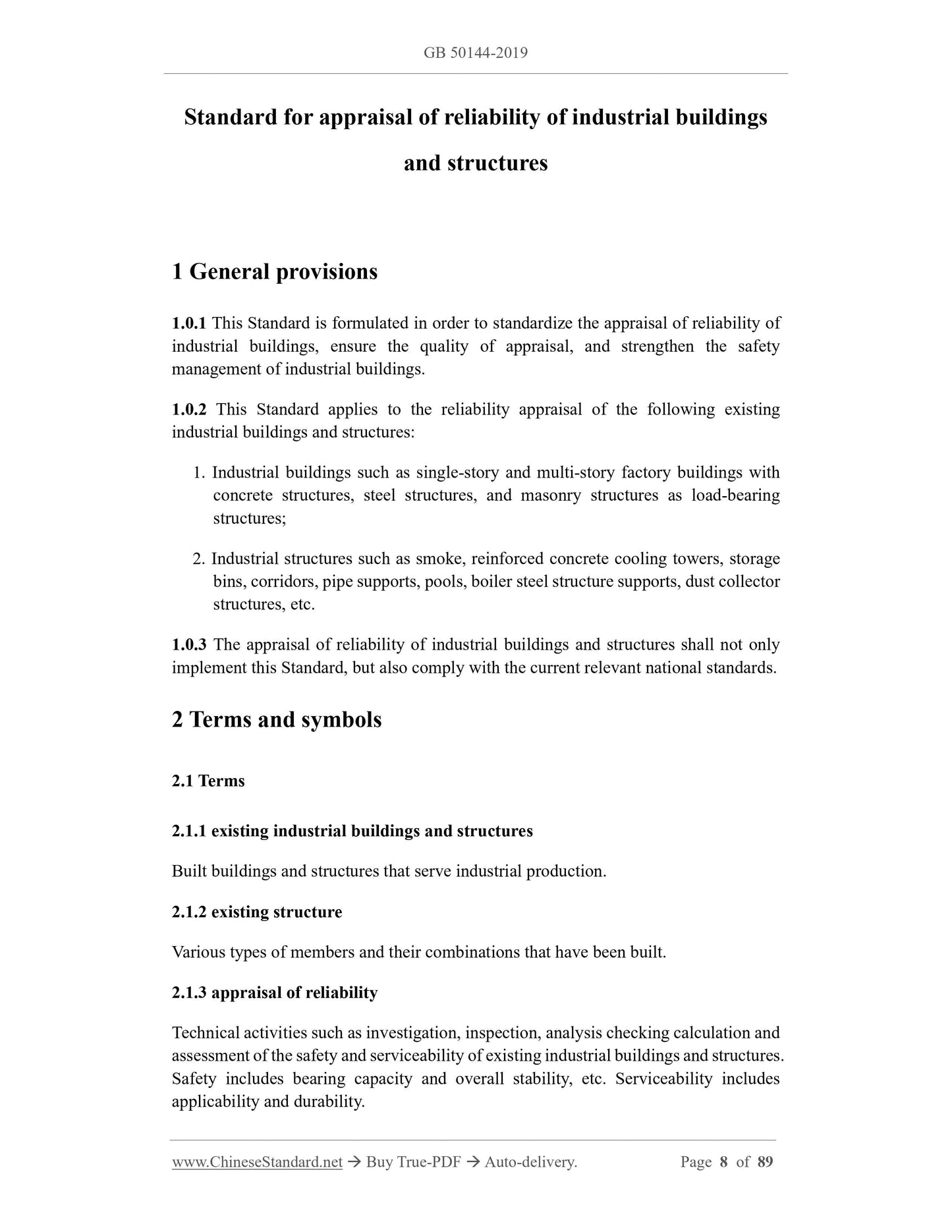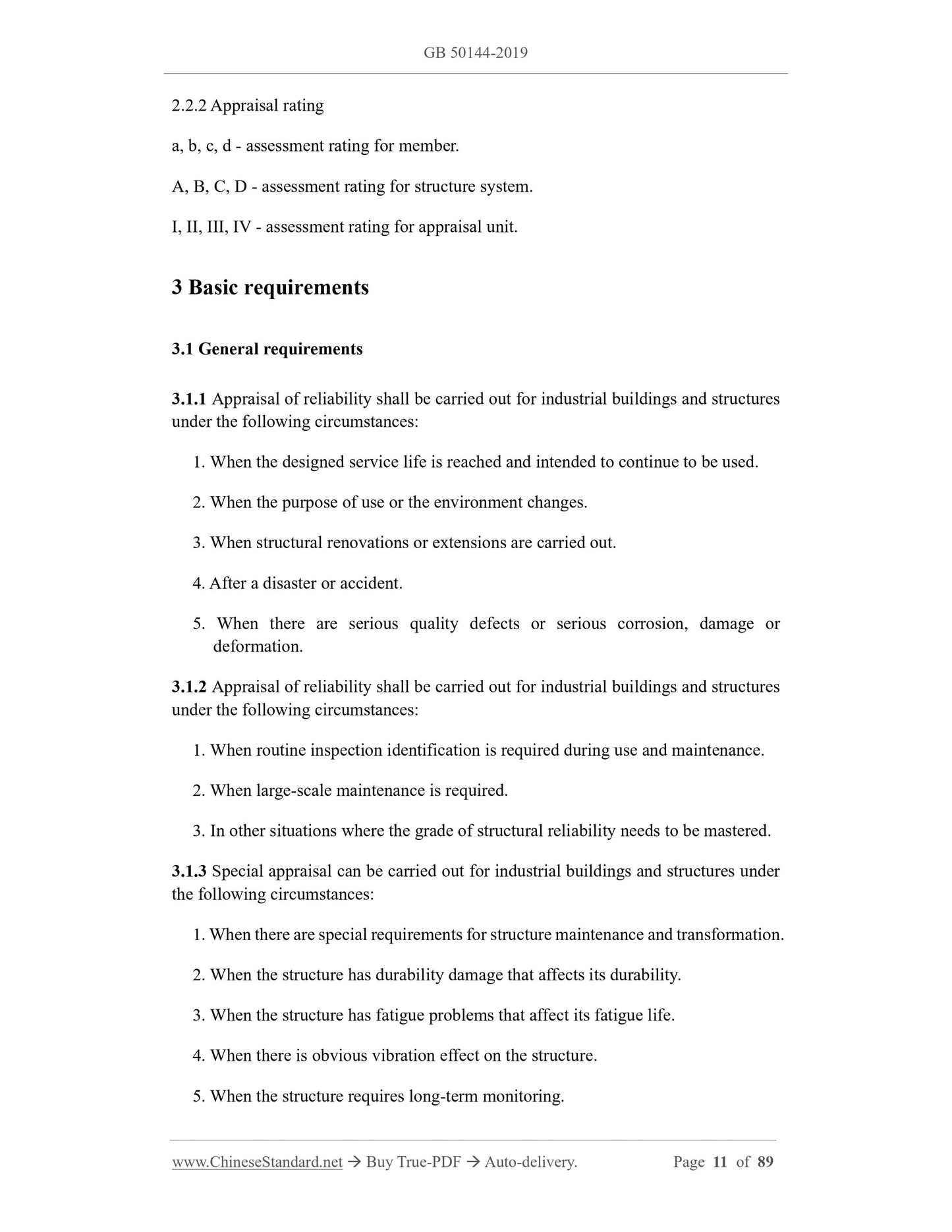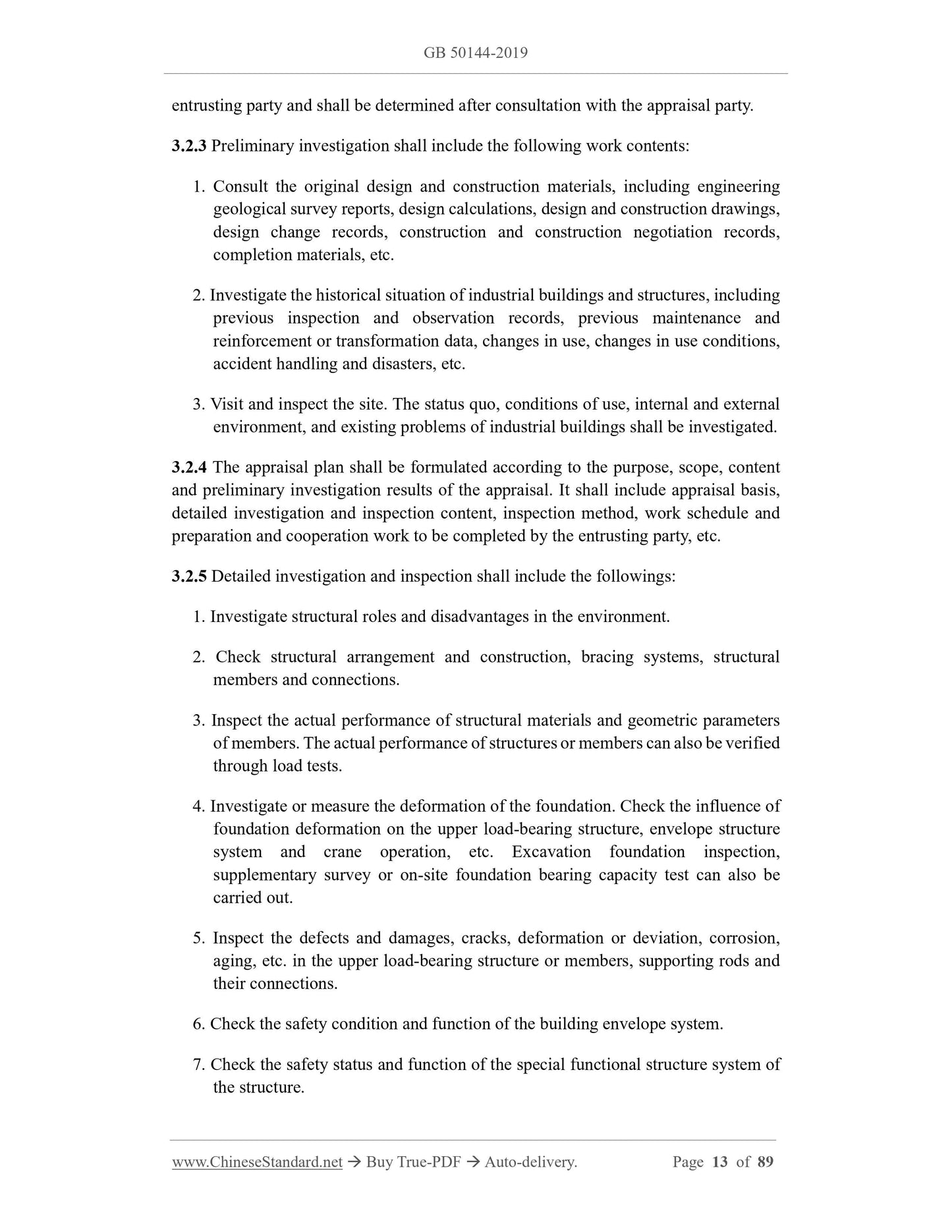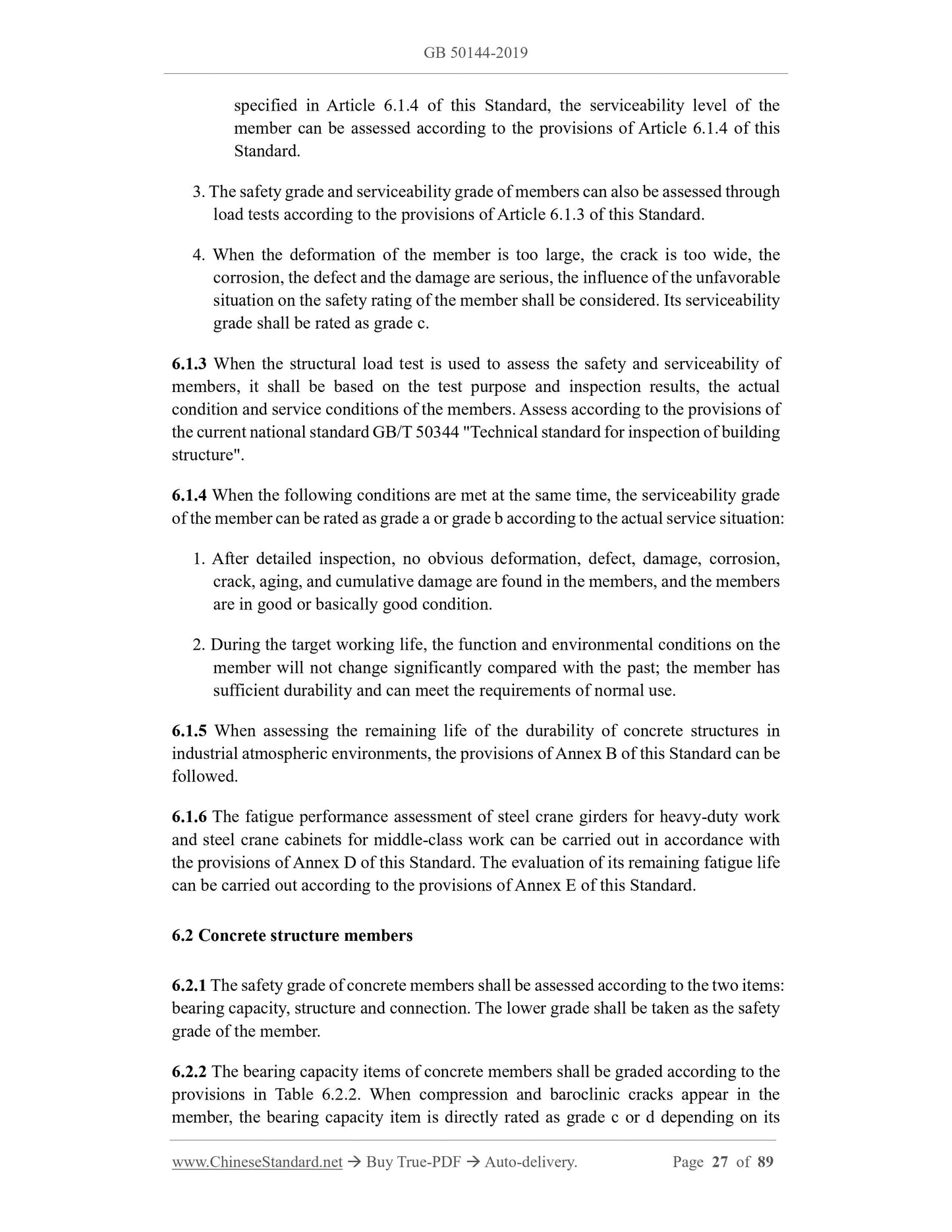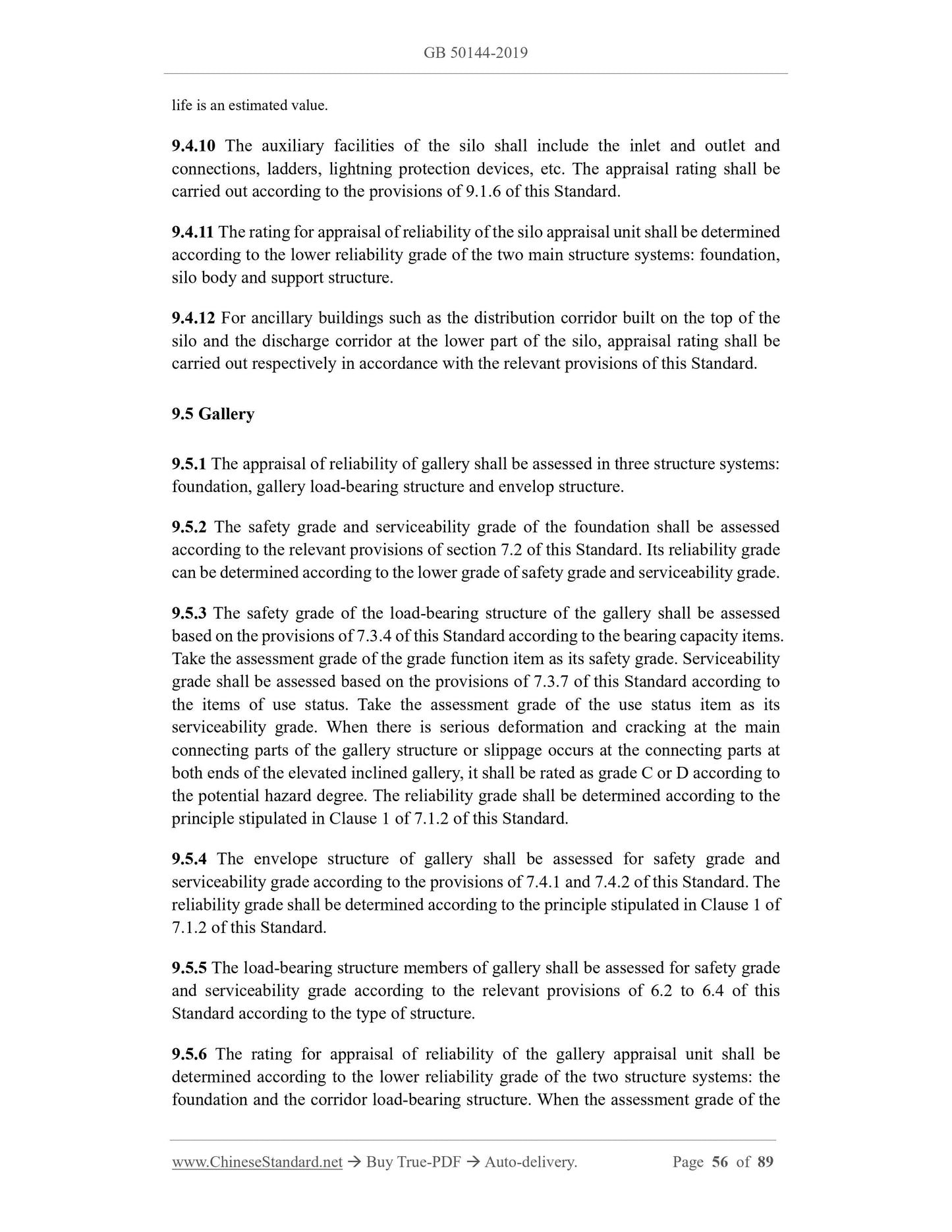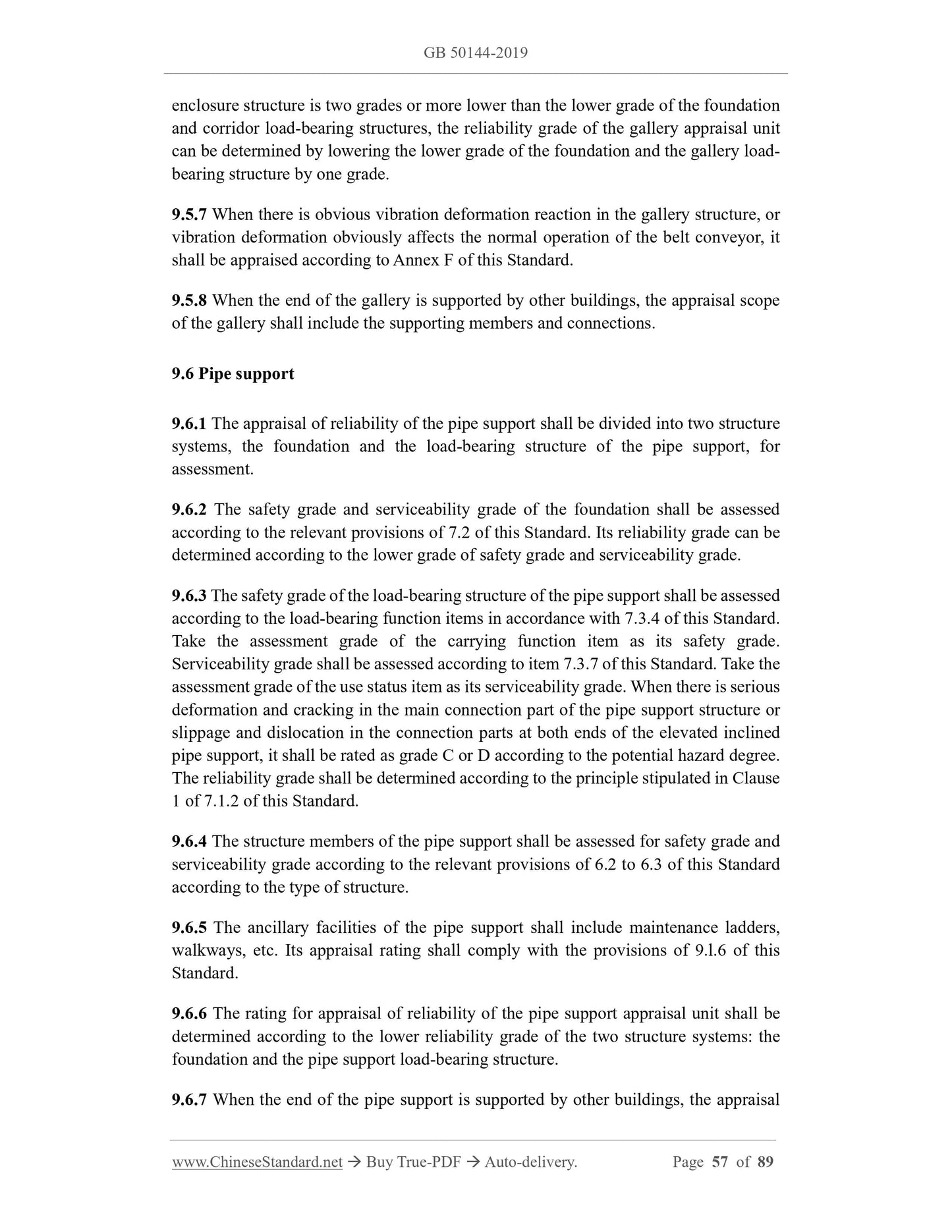1
/
of
12
www.ChineseStandard.us -- Field Test Asia Pte. Ltd.
GB 50144-2019 English PDF
GB 50144-2019 English PDF
Regular price
$1,075.00
Regular price
Sale price
$1,075.00
Unit price
/
per
Shipping calculated at checkout.
Couldn't load pickup availability
GB 50144-2019: Standard for appraisal of reliability of industrial buildings and structures
Delivery: 9 seconds. Download (and Email) true-PDF + Invoice.Get Quotation: Click GB 50144-2019 (Self-service in 1-minute)
Newer / historical versions: GB 50144-2019
Preview True-PDF
Scope
1.0.1 This Standard is formulated in order to standardize the appraisal of reliability ofindustrial buildings, ensure the quality of appraisal, and strengthen the safety
management of industrial buildings.
1.0.2 This Standard applies to the reliability appraisal of the following existing
industrial buildings and structures.
1.Industrial buildings such as single-story and multi-story factory buildings with
concrete structures, steel structures, and masonry structures as load-bearing
structures;
2.Industrial structures such as smoke, reinforced concrete cooling towers, storage
bins, corridors, pipe supports, pools, boiler steel structure supports, dust collector
structures, etc.
1.0.3 The appraisal of reliability of industrial buildings and structures shall not only
implement this Standard, but also comply with the current relevant national standards.
Basic Data
| Standard ID | GB 50144-2019 (GB50144-2019) |
| Description (Translated English) | Standard for appraisal of reliability of industrial buildings and structures |
| Sector / Industry | National Standard |
| Classification of Chinese Standard | P34 |
| Classification of International Standard | 91.040.20 |
| Word Count Estimation | 155,151 |
| Date of Issue | 2019-06-19 |
| Date of Implementation | 2019-12-01 |
| Issuing agency(ies) | Ministry of Housing and Urban-Rural Development of the People's Republic of China; State Administration for Market Regulation |
Share
